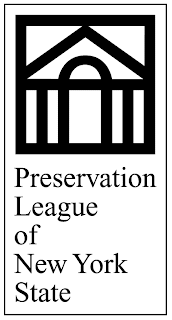 In memory of longtime Winter Olympic supporter and 1980 Lake Placid Winter Olympic Organizing Committee member Philip G. Wolff, the Lake Placid 1932 and 1980 Winter Olympic Museum announces the kickoff of its first endowment fund campaign in a public ceremony, Thursday, June 30. With the completion of the campaign in 2013, the endowment fund, named in Mr. Wolff’s honor, is hoped to allow the Museum to increase its pace of collecting, strengthen its extensive collection, and bring more artifacts of the Winter Games back to the region where America’s Winter Olympic movement began.
In memory of longtime Winter Olympic supporter and 1980 Lake Placid Winter Olympic Organizing Committee member Philip G. Wolff, the Lake Placid 1932 and 1980 Winter Olympic Museum announces the kickoff of its first endowment fund campaign in a public ceremony, Thursday, June 30. With the completion of the campaign in 2013, the endowment fund, named in Mr. Wolff’s honor, is hoped to allow the Museum to increase its pace of collecting, strengthen its extensive collection, and bring more artifacts of the Winter Games back to the region where America’s Winter Olympic movement began.
“Over time, this endowment will allow the Museum to add to its collection with such items as Olympic torches from the 1952 Oslo (Norway) and 1960 Squaw Valley (Calif.) games, which Dad would have loved to have seen in his lifetime,” said David Wolff, Phil Wolff’s son and now a member of the Museum’s board.
“The endowment fund will also provide continuous support for the Museum to enhance and increase its educational programming for visiting families, adjust to fluctuations in giving, and reduce dependence on overstrained public and private funding sources,” added MaryLou Brown, Museum Board president.
Philip G. Wolff, who died in February, was a founder of the Lake Placid 1932 and 1980 Winter Olympic Museum and a member of the 1976 and 1980 Winter Olympic bid committees. In 1978, he was appointed chief of staff of the Lake Placid Winter Olympic Organizing Committee, a position he held until its closure in 1987, volunteering his time during the last three years of that assignment. He also served as chief of the security committee for the 1980 Winter Games. Wolff was instrumental in the Lake Placid Winter Olympic Museum, being awarded the 2005 Olympic Cup by the International Olympic Committee (IOC). More recently, Wolff played a key role in getting the Lake Placid 1932 and 1980 Olympic Bobsled Track named to the National Register of Historic Places. Wolff spoke at a ceremony to mark that designation, which was also attended by Gov. David Paterson (D-New York), in June of last year. At the time of his death, Wolff was the oldest living licensed bobsled driver in the U.S.
The campaign kickoff for the Philip G. Wolff endowment fund will take place at a celebration of Wolff’s life to be held June 30 from 3-4:30 p.m. at the new Olympic Conference Center in Lake Placid. His many friends are invited to attend to honor this man who gave so much to the Museum and to the local area.
The 1932 & 1980 Lake Placid Winter Olympic Museum is an independent, not-for-profit corporation. Its mission is to collect and preserve artifacts and archival materials associated with Lake Placid’s winter sports and winter Olympic heritage- to interpret Lake Placid’s winter sports and winter Olympic heritage to the public- and to preserve and maintain the collection of artifacts and archives assembled by the Lake Placid Olympic Organizing Committee.
The only official Olympic museum in the United States, Lake Placid’s 1932 and 1980 Winter Olympic Museum features the largest collection of winter Olympic artifacts outside the IOC’s museum in Lausanne, Switzerland. The collection includes the first Winter Olympic medal ever awarded – for the 500 meter speed skating competition – won by Lake Placid native Charles Jewtraw in the 1924 Games in Chamonix. His historic medal can be viewed with other items in the Museum collection, including equipment worn by 1980 U.S. Hockey Team goalie Jim Craig during the historic Miracle on Ice, parade clothing from the 1932 winter games, athletes participation medals and Olympic medals from every winter Olympics.







